#history and plants
Explore tagged Tumblr posts
Text

Imagine a pinecone as heavy as a bowling ball and the size of a chihuahua. Believe it or not, such pinecones exist—and they belong to the coulter pine (Pinus coulteri), a conifer that can be found in parts of North America including California and Mexico. Infamous among loggers and foresters, this tree is nicknamed "the widowmaker" because of the unlucky individuals who met their fate as a result of its falling pinecones. This species produces some of the largest pinecones on the planet, weighing up to 11 lbs (5 kg).
Photo: damontighe, CC BY-NC 4.0, iNaturalist
#science#nature#natural history#fact of the day#did you know#plants#pine cones#fun facts#trees#conifer#pine trees
7K notes
·
View notes
Text





DAY 28- SOUTH LANAYRU SKY ARCHIPELAGO
Link think’s Zelda’s fear of heights is understandable, but his life would be a lot easier if she just let herself get shot out of the skyview towers to go exploring with him. Oh well. Look at all the hearty radishes and weird flowers he’s found! (With no future sight to warn the people of the past, stories left behind are unfinished, unfettered, and incredibly biased.)
(This is a totk-botw au called Familiar Familiar, and it all devolved when Zelda didn’t go back in time. History’s written by the victors…)
((Check out my patreon! Full of zelda sketches and crimes))
#critdraws#lonks diary#familiar familiar au#art#botw#zelda#totk#link#linktober 2025#totk link#totk zelda#tears of the kingdom#breath of the wild#lanayru sky archipelago#archipelago#sky islands#floating island#environment art#artists on tumblr#botw zelda#botw link#hearty radish#sparkle fruit#zelda is actually a groundhog#she’s very happy with two feet firmly planted on the ground#which is extra unfortunate when the entire questline involves going skyward#history is written by the victors#and mineru is a very bitter victor#no surprise the murals she left behind only reveal a monster who broke her family#anyways cool wall can i interest you instead with HEARTY RADISHES
3K notes
·
View notes
Text
I am so tickled by the thought of Daniel’s family seeing him at almost 80 branch out into a new social circle comprised of beautiful men in their 20s and 30s that are also the most intense and bizarre people anyone’s ever met and worse now Dad is acting Exactly Like Them
#weird ass glam rock celebrity that came out of nowhere fighting the industry plant allegations#beautiful mysterious art dealer with a history with your dad that’s indescribable#and worst of all. your dad’s 130 pound 28 year old boyfriend who’s presence makes everyone’s hair stand on edge#good for him we all say#interview with the vampire#lestat de lioncourt#louis de pointe du lac#the vampire armand#daniel molloy
2K notes
·
View notes
Text
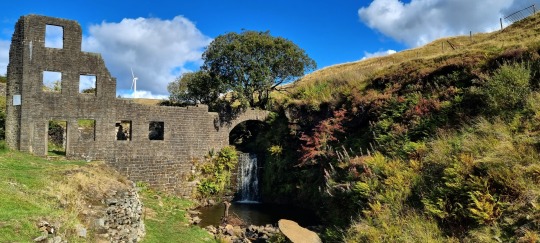
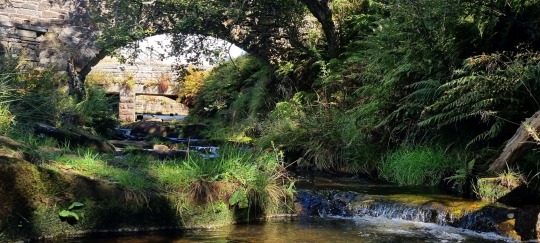
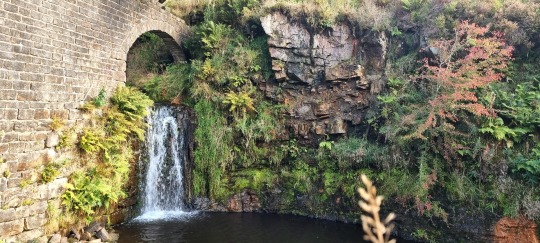
Mill ruins from 1786
#mine#nature#england#countryside#photography#ruins#mill#architecture#history#industrial revolution#rural#nature photography#buildings#river#waterfall#plants#stream
6K notes
·
View notes
Text
Invasive Species and Xenophobia
Invasive species are complicated! People have a lot of feelings about them, positive and negative. Are plants that move "invaders" "colonizing", "immigrants", "citizens"? What does it mean to kill species that are from somewhere else? What if that species legitimately makes a poor neighbor and causes extinctions in other, native species? This complex, culturally-loaded issue is a foundational issue behind a lot of plant conservation and restoration.
This is a juicy and still actively disputed topic! The Guardian recently had a big article on colonialism in Botany, (tbh her views are dated and reductive, imo) and it’s come up again this week, to much hostility (cw: reddit). Yes, my region's native plant restoration came from literal nazis, but also, the impacts of some invasive species are real, not figments of a racist imagination. How do we balance these issues? What does ethical invasive management look like?
Since it’s such a juicy topic, I wanted to offer a few fun readings to share:
The Native Plant Enthusiasm: Ecological Panacea or Xenophobia?, Gert Gröning and Joachim Wolschke-Bulmahn, 2004, Arnoldia.
THE CLASSIC 20th century German nazis and native plants paper. Made a huge splash when it came out, and you will still encounter people who paint all native plant stuff with this brush. Summary: yeah the nazis loved their native plants and used them as part of their conquering process. Also, the first prairie plantings ever, located in Chicago, were done by a racist probable-nazi for racist reasons, full stop. I’ll let him speak for himself: “The gardens that I created myself shall… be in harmony with their landscape environment and the racial characteristics of its inhabitants. They shall express the spirit of America and therefore shall be free of foreign character as far as possible… the Latin and the Oriental crept and creeps more and more over our land, coming from the South, which is settled by Latin people, and also from other centers of mixed masses of immigrants. The Germanic character of our race, of our cities and settlements was overgrown by foreign character. The Latin spirit has spoiled a lot and still spoils things every day.” - Jens Jensen
Botanical decolonization: rethinking native plants, Tomaz Mastnak, 2014, Environment and Planning D: Society and Space
Rather than viewing native plant plantings as an act of racially-pure occupation, Mastnak positions native plants in California as a decolonization of the sub/urban lawn. Uses a lot of quotations from 16th century English philosopher Francis Bacon, and is heavy on the philosophical musings.
From killing lists to healthy country: Aboriginal approaches to weed control in the Kimberley, Western Australia by Bach et al., 2019, Journal of Environmental Management.
This paper talks through some of the native vs invasive debate, and offers a different perspective on how to approach to plant invasive management based on cultural relations, rather than country of origin or behavior.
Beyond ‘Native V. Alien’: Critiques of the Native/alien Paradigm in the Anthropocene, and Their Implications, Charles R. Warren, 2021, Ethics, Policy, & Environment
DENSE but thorough, if you want to follow the entire history of the native/invasive debate, this has you covered. The most interesting stuff, in my opinion, is the discussion of invasive denialism, IE: the impasse of “You’re just being racist!” Vs “You know nothing about ecology!” I recommend the Discussion, which starts on page 13.
#invasive species#native plants#ecology#history#i had to put a reading list together for lab this week#so you get to reap the benefits#the children yearn for the mines#except its me#the research scientist yearns for the syllabi mines
577 notes
·
View notes
Text

Flowers in a Painted Ceramic Vase with Moths by Jan Brueghel the Elder (1568 - 1625)
1K notes
·
View notes
Text
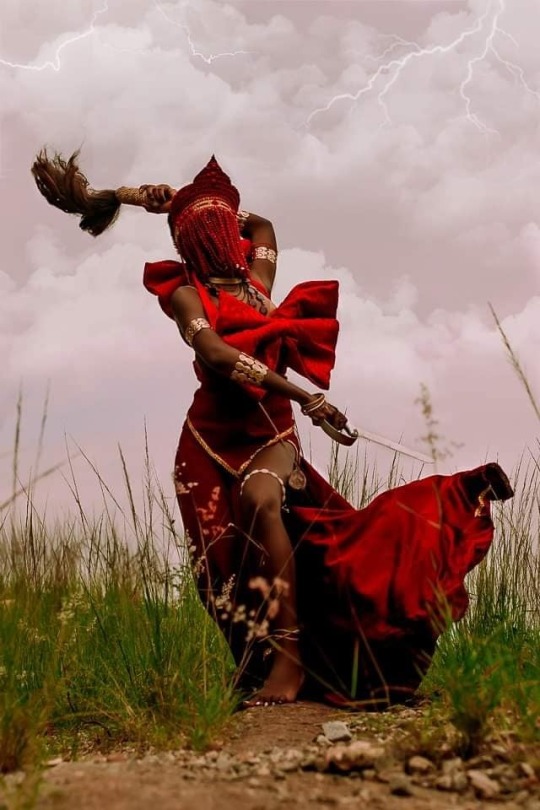



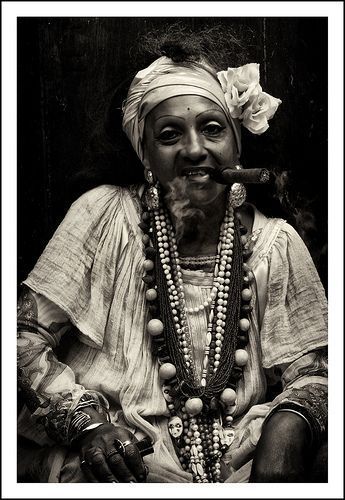


#you scared go to church#hoodoo#conjure#rootwork#roots#voodoo#beauty#black power#black people#orishas#witchy#black spirituality#african traditional religions#level up#black history#black women#black men#melanin#black magic#gentillmatic#black tumblr#black beauty#black experience#spiritual awakening#spirituality#folk magic#plant based#ifa#obeah
731 notes
·
View notes
Text

Okay, so The Everyday Naturalist is up on the Ten Speed Press and Penguin/Random House's websites (and various other public places), so I can FINALLY show you the cover!!! I have been saying for months that this book is going to be absolutely beautiful (in addition to informative!), and now you get a good taste of that. Ricardo Macia Lalinde is an incredibly skilled artist whose natural history studies will grace not only the cover but the interior of the book; I feel incredibly fortunate to have his work included in this project.
Here's a bit more about the book itself: "If you’ve ever consulted a field guide to identify a new bird at your feeder, you know the process isn’t as easy as it sounds. In fact, it seems like you have to know a lot about that mystery bird to even figure out where to start.
"The Everyday Naturalist fills in the gaps by explaining what traits to pay attention to when encountering a new species; how and when to use field guides, apps, and other resources; what to do if you get stuck; and more. Rather than focusing on one region or continent, these skills and tools are designed to help you classify nature anywhere you are—whether on familiar territory, traveling, or in a new home."
The book has officially gone to press with a release date of June 17, 2025. Which means in half a year we can all have physical copies in hand! I haven't yet been able to talk to the marketing folks at the publisher to find out whether I can personally take preorders for signed copies, but I'll keep you posted--in the meantime you can preorder at the bookstore of your choice, online or brick and mortar.
#The Everyday Naturalist#naturalist#nature#natural history#animals#plants#fungi#nature identification#science#scicomm#educational#wildlife#ecology
490 notes
·
View notes
Text

A song of love by Harry George Theaker
#harry george theaker#art#song#music#love#romance#romantic#garden#gardens#middle ages#medieval#english#british#europe#european#history#flowers#plants#guitar#musical instruments
665 notes
·
View notes
Text
I was bamboozled by this copper merchant. Stay away from these swindlers.
8K notes
·
View notes
Text
#art#nature#photography#positivity#sky#landscape#plants#sunset#ai artwork#nature scenery#history#space#lights#love#life#sky blue#cloudyday#calmness#colorful#video of the day#dark aesthetic#aesthetic#artists on tumblr#digital art#picture#pictures#mountains#tumblr milestone#writers on tumblr#art on tumblr
665 notes
·
View notes
Text

Have you ever spotted a fairy lantern? Members of the genus Thismia, these plants don’t use chlorophyll to photosynthesize. Instead, they feed on fungi in the soil. Growing just a few centimeters tall, their unusual-looking, vibrant flowers bloom briefly to attract pollinating insects—like fungus gnats. There are more than a hundred known species of this elusive plant around the planet, ranging from parts of Asia to Australia to the Americas.
Photo: Matheus Moroti, CC BY-NC 4.0, iNaturalist (Thismia mantiqueirensis pictured)
877 notes
·
View notes
Note
I just wanted to say I love all of your art in general, but the recent talk of leeks have been particularly interesting to me - I'm Scottish Ashkenazi and leeks are a staple in some of my favorite foods and national dishes, it's so interesting to see leeks be such an important food in Jewish cultures around the world!
Oaaah yes that's cool! I need to look up the history of the leek's travels.. It's native to the middle east and mediterranean which is why it's pretty universal in Jewish food : ) but it was brought to Europe in ancient times! We all love leek because they are decently cold tolerant 💚

Leek
257 notes
·
View notes
Text
imagine being one of the clowns comparing the star of david to the nazi swastika and truly believing in yourself being on the “right side of history”
#because people only give a shit about‘being on the right side of history’#if it makes them out to be virtuous and morally superior#it’s virtue signaling#but like. imagine planting yourself on this hill and proudly claiming you’ll die on that hill#the universally recognized symbol of judaism being compared to the people who slaughtered jews en mass is just fucking evil
339 notes
·
View notes
Note
how do you come up with the ways cultures in your setting stylize people/animals/the world in general in their artwork, i.e. jewlery, rock carvings, statues, etc? Each culture in your world seems to have a very unique "art style" and I love it a lot - makes them seem that much more 'real'. This is something I struggle with a lot in my own worldbuilding and I'd love to pick your brain if possible 😁
I think a starting point is to have a research process based in the material realities of the culture you're designing for. Ask yourself questions like:
Where do they live? What's the climate/ecosystem(s) they are based in? What geographic features are present/absent?
What is their main subsistence method? (hunter gatherer, seasonal pastoralist, nomadic pastoralist, settled agriculturalist, a mix, etc)
What access to broader trade networks do they have and to whom? Are there foreign materials that will be easily accessible in trade and common in use, or valuable trade materials used sparingly in limited capacities?
Etc
And then do some research based on the answers, in order to get a sense of what materials they would have routine access to (ie dyes, metal, textiles, etc) and other possible variables that would shape how the art is made and what it's used for. This is just a foundational step and won't likely play much into designing a Style.
If you narrow these questions down very specifically, (ie in the context of the Korya post- grassland based mounted nomads, pastoralist and hunter-gatherer subsistence, access to wider trade networks and metals), you can direct your research to specific real world instances that fit this general idea. This is not to lift culturally specific concepts from the real world and slap them into your own setting, but to notice commonalities this lifestyle enforces - (ie in the previous example- mounted nomadic peoples are highly mobile and need to easily carry their wealth (often on clothing and tack) therefore small, elaborate decorative artwork that can easily be carried from place to place is a very likely feature)
For the details of the art itself, I come up with loose 'style guides' (usually just in my head) and go from there.
Here's some example questions for forming a style (some are more baseline than others)
Are geometric patterns favored? Organic patterns? Representative patterns (flowers, animals, stars, etc)? Abstract patterns?
Is there favored material(s)? Beads, bone, clay, metals, stones, etc.
When depicting people/animals, is realism favored? Heavy stylization? The emotional impression of an animal? Are key features accentuated?
How perspective typically executed? Does art attempt to capture 3d depth? Does it favor showing the whole body in 2 dimensions (ie much of Ancient Egyptian art, with the body shown in a mix of profile and forward facing perspective so all key attributes are shown)? Will limbs overlap? Are bodies shown static? In motion?
Does artwork of people attempt to beautify them? Does it favor the culture's conception of the ideal body?
Are there common visual motifs? Important symbols? Key subject matters?
What is the art used for? Are its functions aesthetic, tutelary, spiritual, magical? (Will often exist in combination, or have different examples for each purpose)
Who is represented? Is there interest in everyday people? Does art focus on glorifying warriors, heroes, kings?
Are there conventions for representing important figures? (IE gods/kings/etc being depicted larger than culturally lesser subjects)
Is there visual shorthand to depict objects/concepts that are difficult to execute with clarity (the sun, moon, water), or are invisible (wind, the soul), or have no physical component (speech)?
Etc
Deciding on answers to any of these questions will at least give you a unique baseline, and you can fill in the rest of the gaps and specify a style further until it is distinct. Many of these questions are not mutually exclusive, both in the sense of elements being combined (patterns with both geometric and organic elements) or a culture having multiple visual styles (3d art objects having unique features, religious artwork having its own conventions, etc).
Also when you're getting in depth, you should have cultural syncretism in mind. Cultures that routinely interact (whether this interaction is exchange or exploitation) inevitably exchange ideas, which can be especially visible in art. Doing research on how this synthesizing of ideas works in practice is very helpful- what is adopted or left out from an external influence, what is retained from an internal influence, what is unique to this synthesis, AND WHY. (I find Greco-Buddhist art really interesting, that's one of many such examples)
Looking at real world examples that fit your parameters can be helpful (ie if I've decided on geometric patterns in my 'style guide', I'll look at actual geometric patterns). And I strongly encourage trying to actually LEARN about what you're seeing. All art exists in a context, and having an understanding of how the context shapes art, how art does and doesn't relate to broader aspects of a society, etc, can help you when synthesizing your own.
#I have a solid baseline because I like learning about history so don't do this like. Full research process every time. It's just the gist#of what the core process is.#I think I've gotten a similar question about clothing in the past that I never answered (sorry) so yeah this applies to that as well#Though that involves a heavier preliminary research end (given there are substantially more practical concerns that shape the#making of clothing- material sources they have access to (plant textile? wool? hide? etc). The clothing's protective purpose (does#it need to protect from the sun? wind? mild cold? extreme cold?). Etc#Also involves establishing like. Beauty conventions. Gendered norms of dress. Modesty conventions. Etc#I think learning about the real world and different cultures across history is like. The absolute most important thing for good#worldbuilding. And this means LEARNING learning. Having the curiosity to learn the absolute myriad of Things People Do#and Why We Do Them and how we relate to shared aspects of our world. The commonalities and differences. I think this is like...#Foundational to having the ability to synthesize your own rather than just like. copy-pasting concepts at random
357 notes
·
View notes
Text

Some fellas spend Labor Day drinking and camping on Bear Mountain.
New York
1988
#vintage camping#campfire light#New York#bear mountain#history#road trips#beer#robert plant#rock n roll#hiking#partying#1980s
218 notes
·
View notes